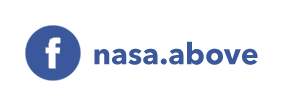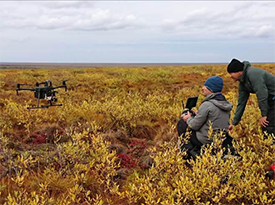Note from leadership:
Since the last newsletter this past summer, the progress of ABoVE has continued to march forward. Much of this is due to the maturation and, in many cases, completion of Phase 1 projects while Phase 2 projects either ramp up or expand their ongoing research. At the time of the last science team meeting in La Jolla last May, there were some 135 peer reviewed publications reported by ABoVE projects. Since then these numbers have risen to more than 200 publications reported by 107 projects, including 21 ABoVE affiliated projects. Quite a few of these publications are in top tier journals, including two recent papers in the journal Nature reporting on the loss of legacy carbon from boreal forest soils due to the 2014-15 “megafires” in the Northwest Territories, and a synthesis project reporting on larger than expected pan-Arctic soil respiration outside of the growing season. The ABoVE Focus Collection of publications in the Environmental Research Letters also continues to grow, with some 44 publications currently in print or forthcoming covering a wide range of research across the study domain.
ABoVE also continues to broaden its impact via increased sharing of data sets through the Oak Ridge National Laboratory (ORNL) Distributed Active Archive Center (ORNL DAAC). Currently there are 100 published ABoVE data products stored at the ORNL DAAC, each with a unique DOI number for citation. These data sets will inform research for years into the future, well beyond the duration of ABoVE (currently set to run through 2025). We have not yet compiled an impact factor associated with these many journal and data publications, partly because most are so recent, but we will begin tracking in the near future. This is yet another reason to properly acknowledge NASA ABoVE support in your relevant publications and to report those publications on the ABoVE website for your specific project(s).
Much of this progress, and more, is reported in regular tag-ups of the Working Groups Leads, and a good bit of it was also presented at the Fall meeting of the American Geophysical Union in San Francisco last December. ABoVE teamed with Polaris (NSF) and others to convene the largest set of sessions within the Biogeosciences section. The sessions, which were entitled The Resilience and Vulnerability of Arctic and Boreal Ecosystems to Climate Change contained 40 presentations across 6 oral sessions as well as another 15 eLightning talks and 38 poster presentations, many by members of the ABoVE Science Team. It was a lively exchange of ideas and progress updates that will undoubtedly stimulate further collaboration, coordination and advancements of multi-disciplinary synthesis activities under the umbrella of ABoVE research and applications. Research highlights from ABoVE were also presented on the Hyperwall at the NASA booth in the Exhibition Hall.

Peter Griffith presenting on the Hyperwall at AGU 2019.
Photo credit: Genevieve de Messieres, NASA GSFC |
We are also working in collaboration with the Yukon Government to plan a meeting in Whitehorse this spring. One of the goals for this meeting will be to discuss opportunities for both ABoVE researchers and others to use the airborne data collected in the region, learn about activities from Canadian and Indigenous partners, and explore areas for possible future collaborations. If you are interested in participating, please contact Libby (libby.larson@nasa.gov).
The 6th meeting of the ABoVE Science Team (ASTM6) will be held in Fairbanks, Alaska from May 11th-14th, 2020 followed by a 1.5-day meeting being coordinated by the Alaska Fire Science Consortium (AFSC). The AFSC workshop is being designed to facilitate direct interaction of ABoVE scientists with resource managers in the domain. Planning for ASTM6 and the AFSC workshop are underway and organizing committees have been formed for both. If you are interested in participating in either, or even if you have suggestions but don’t necessarily want to participate in the committees, please let the ABoVE leadership or other members of the organizing committee know. This includes possible field trips to research sites and facilities. Details on both meetings will be forthcoming over the next few months but mark your calendars now to avoid conflicts.
We hope each currently-funded project will be represented by one or two members. Additionally, we ask that you identify the names of stakeholders who may be interested in participating in joint refinement of data products arising from research to inform management efforts. The organizing committee with consider these and extend invitations as space permits.
There will also be a special ABoVE session at the Canadian Symposium on Remote Sensing, Yellowknife, July 13-17 2020. We encourage ABoVE team members, especially those whose research addresses the Canadian portions of the ABoVE domain, to participate.
We look forward to seeing you in Fairbanks in May, if not sooner!
Scott, Chip, Peter, Libby, Liz, Mike, and Hank
|







